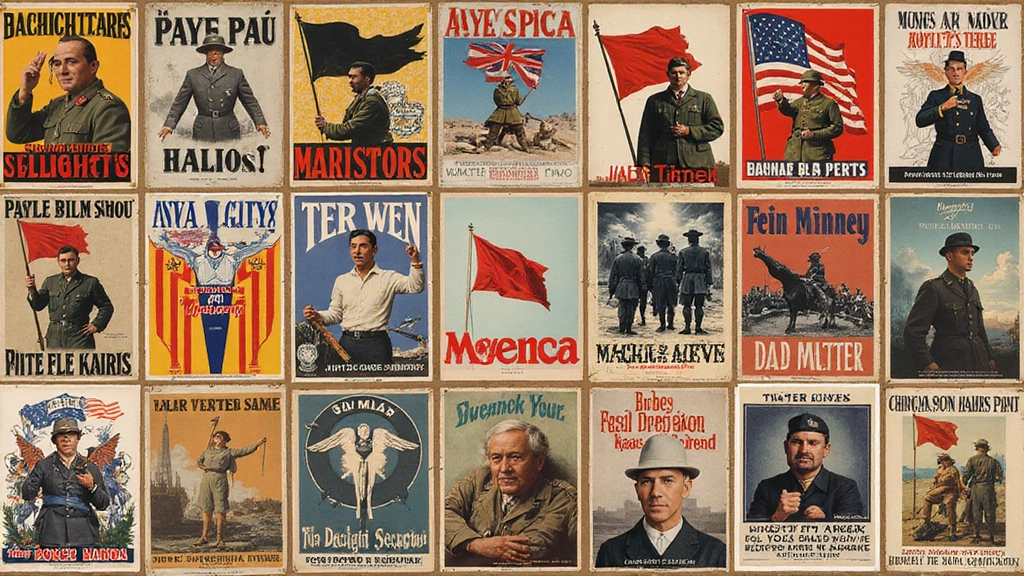Table of Contents
Introduction
The Super Bowl is more than just a football game; it is an annual cultural phenomenon that captures the attention of millions worldwide. From its humble beginnings in 1967 to its current status as one of the most-watched television events in history, the Super Bowl has evolved into a spectacle that transcends sports. This article delves into the rich history of the Super Bowl, exploring its origins, memorable moments, and its impact on American culture.
The Origins of the Super Bowl
The Super Bowl was born out of necessity. In the 1960s, professional football in the United States was divided between two rival leagues: the National Football League (NFL) and the American Football League (AFL). The NFL, established in 1920, was the older and more established league, while the AFL, founded in 1960, was the upstart challenger. The two leagues competed fiercely for fans, players, and television contracts, leading to a bidding war that threatened to destabilize the sport.
To resolve this conflict, the leagues agreed to merge in 1966. As part of the merger, they decided to hold an annual championship game between the winners of each league. This game was initially called the “AFL-NFL World Championship Game,” but it quickly became known as the “Super Bowl” thanks to Lamar Hunt, the owner of the AFL’s Kansas City Chiefs. Hunt reportedly got the idea from his children’s toy, a “Super Ball,” and the name stuck.
The first Super Bowl took place on January 15, 1967, at the Los Angeles Memorial Coliseum. The game featured the NFL’s Green Bay Packers, led by legendary coach Vince Lombardi, against the AFL’s Kansas City Chiefs. The Packers dominated the game, winning 35-10, and Lombardi cemented his legacy as one of the greatest coaches in football history. The victory also reinforced the NFL’s superiority over the AFL, at least in the early years of the Super Bowl.
The Early Years: Establishing a Tradition
In its early years, the Super Bowl was not the cultural juggernaut it is today. The first few games were relatively modest affairs, with ticket prices as low as $12 and many seats left unsold. However, the NFL and AFL worked tirelessly to promote the event, and by the mid-1970s, the Super Bowl had begun to capture the public’s imagination.
One of the key moments in the Super Bowl’s rise to prominence came in 1969, when Joe Namath, the charismatic quarterback of the AFL’s New York Jets, famously guaranteed a victory over the heavily favored NFL’s Baltimore Colts in Super Bowl III. Namath backed up his bold prediction, leading the Jets to a 16-7 upset victory. This game not only legitimized the AFL but also helped establish the Super Bowl as a must-watch event.
The 1970s saw the Super Bowl grow in popularity, thanks in part to the NFL’s decision to merge the two leagues into two conferences: the American Football Conference (AFC) and the National Football Conference (NFC). This move created a unified league and added a sense of continuity to the Super Bowl. During this decade, teams like the Pittsburgh Steelers, Dallas Cowboys, and Miami Dolphins became dynasties, winning multiple championships and creating lasting legacies.
The 1980s and 1990s: The Super Bowl Becomes a Cultural Event
By the 1980s, the Super Bowl had firmly established itself as a major cultural event. The game’s halftime show, which had previously featured college marching bands, began to include performances by major artists. In 1993, Michael Jackson’s electrifying performance during Super Bowl XXVII marked a turning point, transforming the halftime show into a must-see spectacle.
The 1980s also saw the rise of iconic players like Joe Montana, Jerry Rice, and Lawrence Taylor, who became household names thanks to their Super Bowl performances. The San Francisco 49ers, led by Montana and Rice, won four Super Bowls during the decade, cementing their place in football history.
The 1990s brought even more drama and excitement to the Super Bowl. The Dallas Cowboys, led by the “Triplets” – Troy Aikman, Emmitt Smith, and Michael Irvin – won three championships in four years. Meanwhile, the Buffalo Bills made history by becoming the first team to lose four consecutive Super Bowls, a testament to both their resilience and the heartbreak of coming up short on the biggest stage.
One of the most memorable moments of the 1990s came in Super Bowl XXV, when the New York Giants defeated the Buffalo Bills 20-19 in a game that came down to a last-second field goal attempt by Bills kicker Scott Norwood. Norwood’s kick sailed wide right, and the Giants secured their second Super Bowl victory.
The 2000s: A New Era of Dominance and Innovation
The turn of the millennium ushered in a new era of Super Bowl history. The New England Patriots, led by quarterback Tom Brady and coach Bill Belichick, emerged as the dominant team of the 2000s and 2010s. The Patriots won six Super Bowls during this period, including a dramatic comeback victory over the Atlanta Falcons in Super Bowl LI. Trailing 28-3 in the third quarter, the Patriots rallied to win 34-28 in overtime, marking the largest comeback in Super Bowl history.
The 2000s also saw the Super Bowl embrace new technologies and innovations. High-definition broadcasts, interactive online experiences, and social media engagement transformed the way fans experienced the game. The halftime show continued to evolve, with performances by artists like Prince, Beyoncé, and Lady Gaga drawing record-breaking audiences.
The Super Bowl and American Culture
Beyond the game itself, the Super Bowl has become a cultural touchstone. The commercials that air during the broadcast have become almost as anticipated as the game, with companies spending millions of dollars to create memorable ads. The Super Bowl has also become a platform for social and political statements, from Colin Kaepernick’s protests against racial injustice to the NFL’s efforts to promote diversity and inclusion.
The Super Bowl’s impact extends beyond the United States. The game is broadcast in over 180 countries, and its halftime show and commercials are watched by millions of people around the world. The Super Bowl has also inspired international events, such as the NFL’s annual games in London and Mexico City, as the league seeks to grow its global audience.
Memorable Super Bowl Moments
Over the years, the Super Bowl has produced countless unforgettable moments. Here are just a few:
- Super Bowl XIII (1979): The Pittsburgh Steelers defeated the Dallas Cowboys 35-31 in a game that featured multiple lead changes and dramatic plays, including a controversial pass interference call that helped the Steelers secure the win.
- Super Bowl XXIII (1989): Joe Montana led the San Francisco 49ers on a 92-yard game-winning drive in the final minutes to defeat the Cincinnati Bengals 20-16. Montana’s calm under pressure earned him the nickname “Joe Cool.”
- Super Bowl XXXIV (2000): The St. Louis Rams defeated the Tennessee Titans 23-16 in a game that came down to the final play. Titans wide receiver Kevin Dyson was tackled just one yard short of the end zone as time expired, a moment immortalized as “The Tackle.”
- Super Bowl XLIX (2015): The New England Patriots defeated the Seattle Seahawks 28-24 in a game that featured one of the most controversial play calls in Super Bowl history. With the Seahawks on the Patriots’ one-yard line and just seconds remaining, Seattle opted to pass instead of run, resulting in an interception that sealed the Patriots’ victory.
The Future of the Super Bowl
As the Super Bowl enters its sixth decade, its future looks brighter than ever. The game continues to attract top talent, both on the field and in the halftime show, and its global audience continues to grow. The NFL’s commitment to innovation ensures that the Super Bowl will remain.
MORE TO READ…
Introduction
Electric cars have become a symbol of innovation and sustainability in the 21st century, but their history dates back much further than most people realize. From their humble beginnings in the 19th century to their resurgence in the modern era, electric vehicles (EVs) have undergone a fascinating evolution. This article delves into the detailed history of electric cars, exploring their rise, fall, and triumphant return, highlighting key milestones and technological advancements. Whether you’re an EV enthusiast or a curious reader, this comprehensive guide will provide valuable insights into the history of electric cars and their impact on the automotive industry.
The Early Days: Birth of the Electric Car (1820s–1900)
The history of electric cars begins in the early 19th century, long before the invention of the internal combustion engine (ICE). During this period, inventors across Europe and the United States were experimenting with battery-powered vehicles.
1. The First Electric Vehicles (1820s–1830s)
- In 1828, Hungarian inventor Ányos Jedlik created a small-scale model of an electric-powered vehicle using a primitive electric motor.
- Around the same time, American inventor Thomas Davenport built a similar model, showcasing the potential of electric propulsion.
- In 1835, Professor Sibrandus Stratingh of the Netherlands designed a small electric car powered by non-rechargeable primary cells.
2. The First Practical Electric Cars (1880s–1890s)
- The development of rechargeable lead-acid batteries in 1859 by French physicist Gaston Planté paved the way for practical electric vehicles.
- In 1884, English inventor Thomas Parker, known for electrifying the London Underground, built one of the first production electric cars.
- By the 1890s, electric cars began to gain popularity in the United States. Companies like Morrison Electric and Riker Electric Motor Company produced vehicles that were quiet, easy to operate, and emission-free.
3. The Golden Age of Electric Cars (1890s–1900s)
- At the turn of the 20th century, electric cars were among the most popular vehicles on the road. Urban dwellers particularly favoured them for their simplicity and lack of noise.
- In 1897, the first electric taxis hit the streets of New York City, marking a significant milestone in the history of electric cars.
- Famous figures like Thomas Edison and Clara Ford (Henry Ford’s wife) drove electric cars, further boosting their appeal.
The Decline of Electric Cars (1910s–1970s)
Despite their early success, electric cars began to lose ground to gasoline-powered vehicles in the early 20th century. Several factors contributed to their decline.
1. The Rise of the Internal Combustion Engine
- The invention of the electric starter by Charles Kettering in 1912 eliminated the need for hand-cranking gasoline cars, making them more user-friendly.
- Henry Ford’s mass production of the Model T in 1908 made gasoline cars significantly cheaper than electric vehicles.
- The discovery of vast petroleum reserves in Texas and elsewhere made gasoline more affordable and accessible.
2. Limited Range and Infrastructure
- Early electric cars had limited range, typically around 30–50 miles per charge, which paled in comparison to gasoline cars.
- The lack of charging infrastructure further hindered their adoption, especially in rural areas.
3. The Great Depression and World Wars
- The economic hardships of the Great Depression and the resource demands of World War I and II shifted focus away from electric vehicle development.
- By the 1930s, electric cars had largely disappeared from the market, becoming a footnote in automotive history.
Origins of the Gold Standard
Early Use of Gold as Currency
Gold has been valued for its rarity, durability, and beauty since ancient times. Civilizations such as the Egyptians, Greeks, and Romans used gold coins as a medium of exchange. However, these early uses of gold were not part of a formalized monetary system. The concept of a gold standard, where the value of currency is directly tied to a specific amount of gold, began to take shape much later.
The Birth of the Gold Standard
The gold standard as we know it began to emerge in the 17th and 18th centuries. England was one of the first countries to adopt a de facto gold standard in 1717 when Sir Isaac Newton, then the Master of the Mint, set the exchange rate between silver and gold. This move effectively placed England on a gold standard, although it was not formally recognized until the early 19th century.
Formal Adoption in the 19th Century
The formal adoption of the gold standard began in the 19th century, with the United Kingdom leading the way. The British Parliament passed the Coinage Act of 1816, which officially established the gold standard by defining the pound sterling in terms of gold. This act set the precedent for other nations to follow.





4 thoughts on “The History of the Super Bowl: A Legacy of Football, Entertainment, and Cultural Impact”
Comments are closed.